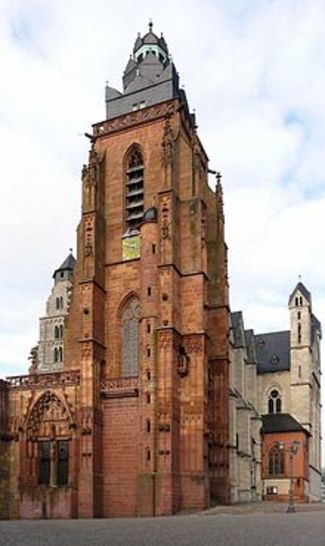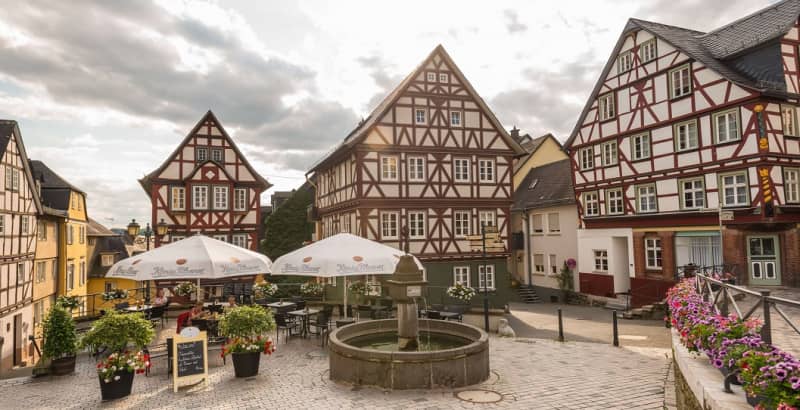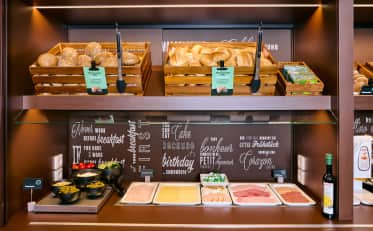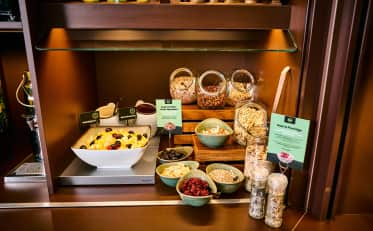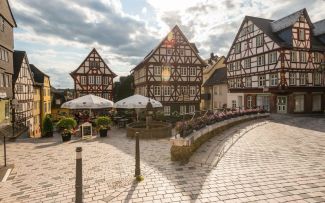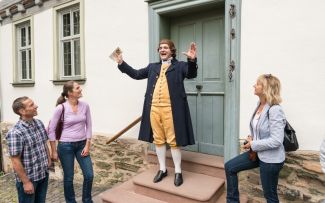Wetzlar, the city of optics and Goethe
The Hessian city of Wetzlar is best known for two things in particular: Firstly, it became known as the city of optics, after Oskar Barnack produced the first portable camera for Leica in the city in 1925. The Leica Camera AG company is still based in the city to this day, and attracts visitors from all over the world. Secondly, it is associated with Goethe, because the German poet spent time here in 1772, providing the inspiration for his seminal work, ‘The sorrows of the young Werther.’ There are still several historical buildings dating from that period, so visitors are able to experience a taste the past. Little wonder, that tourists are attracted to the city’s well-preserved Old Town.
Wetzlar Old Town
Old Lahn bridge: Wetzlar, as it was in the Middle Ages
On a walk around the quaint laneways of the historic town centre, there is a great deal to discover. The well preserved townhouses, Medieval marketplaces and small boutiques direct on the Ufer river offer much to appeal to visitors. The city’s six museums, with displays on culture, literature and the city’s history are all located in Wetzlar’s Old Town. No visit is complete without a trip to the Old Lahn bridge. This was first built in 1288 and is among the oldest bridges in Hesse.
Tour around Wetzlar: experience the cathedral and architecture
A further highlight is the Wetzlar Cathedral This assumes a prominent position in the centre of the Old Town and counts among the city’s most important landmarks. The building of the cathedral began in the year 1230, and to this day it remains unfinished. The buildings impress with their various Medieval building techniques. From Gothic to Late Romantic, a host of architectural styles are represented.
Museums in Wetzlar: On the trail of Goethe
The city’s six museums include two literary museums, devoted to Goethe’s works in Wetzlar. The Lottehaus is a museum devoted to the memory of Charlotte Kestner (née Buff), whom Goethe first met during his time in Wetzlar, and who became the object of his unrequited affection. The poet’s experiences inspired his book, ‘The sorrows of the young Werther’, in which ‘Lotte’ appears as a chief protagonist. The Jerusalemhaus, meanwhile, is devoted to the memory of Karl Wilhelm Jerusalem, another acquaintance of Goethe’s. Jerusalem took his own life in this building, reportedly in response to a failed love affair, inspiring Goethe’s character ‘Werther’.
Recreational activities in Wetzlar and surrounds
Burg Kalsmunt: Wetzlar’s best viewing point
The city’s six museums include two literary museums, devoted to Goethe’s works in Wetzlar. The Lottehaus is a museum devoted to the memory of Charlotte Kestner (née Buff), whom Goethe first met during his time in Wetzlar, and who became the object of his unrequited affection. The poet’s experiences inspired his book, ‘The sorrows of the young Werther’, in which ‘Lotte’ appears as a chief protagonist. The Jerusalemhaus, meanwhile, is devoted to the memory of Karl Wilhelm Jerusalem, another acquaintance of Goethe’s. Jerusalem took his own life in this building, reportedly in response to a failed love affair, inspiring Goethe’s character ‘Werther’.
Walking, cycling or canoeing? Wetzlar has plenty to offer active people!
The city’s six museums include two literary museums, devoted to Goethe’s works in Wetzlar. The Lottehaus is a museum devoted to the memory of Charlotte Kestner (née Buff), whom Goethe first met during his time in Wetzlar, and who became the object of his unrequited affection. The poet’s experiences inspired his book, ‘The sorrows of the young Werther’, in which ‘Lotte’ appears as a chief protagonist. The Jerusalemhaus, meanwhile, is devoted to the memory of Karl Wilhelm Jerusalem, another acquaintance of Goethe’s. Jerusalem took his own life in this building, reportedly in response to a failed love affair, inspiring Goethe’s character ‘Werther’.
Indulgence in Wetzlar: Gastronomy and markets
Wetzlar presents a wide culinary offering: Particularly in the Old Town, there are many different restaurants, cafes, beer gardens and pubs offering regional and international specialties. A visit to the ‘Hörnsheimer Eck’, the oldest restaurant in the Old Town, is particularly recommended.
For fresh produce, Wetzlar’s weekly markets are an ideal place to visit. Particularly the weekly market on the Cathedral Square (Saturdays from 8-14:00). There are also Wetzlar’s seasonal markets, which are not to be missed: In October, Wetzlar’s Gallusmarkt attracts countless visitors with its 150 market stalls, as well as various attractions and rides. From the end of November to the end of December, visitors can enjoy the Christmas market on Cathedral Square, taste seasonal delicacies and go ice-skating.
Getting around the city
With the majority of the city’s attractions located within the Old Town, it’s very easy to discover them all on foot. Alternatively, Wetzlar’s Citybus connects you with all the attractions between the train station with the Old Town. The popular Forum Wetzlar shopping centre is also on the route. Tickets for the Citybus are available for very reasonable prices: A one-way ticket is €0.50 per journey, a mini group ticket for 3 people is €1.00.
Directions to Wetzlar
Wetzlar is conveniently located and can be reached either by car, train or plane. The best way to get into the city by car is with the A45 or the E41. For those travelling by rail, there are numerous connections with regional and express trains, as well as an Intercity line stopping at Wetzlar between Münster and Frankfurt am Main. If travelling by plane, it is best to fly to Frankfurt (approx 70km away) and then take the Intercity to Wetzlar.
